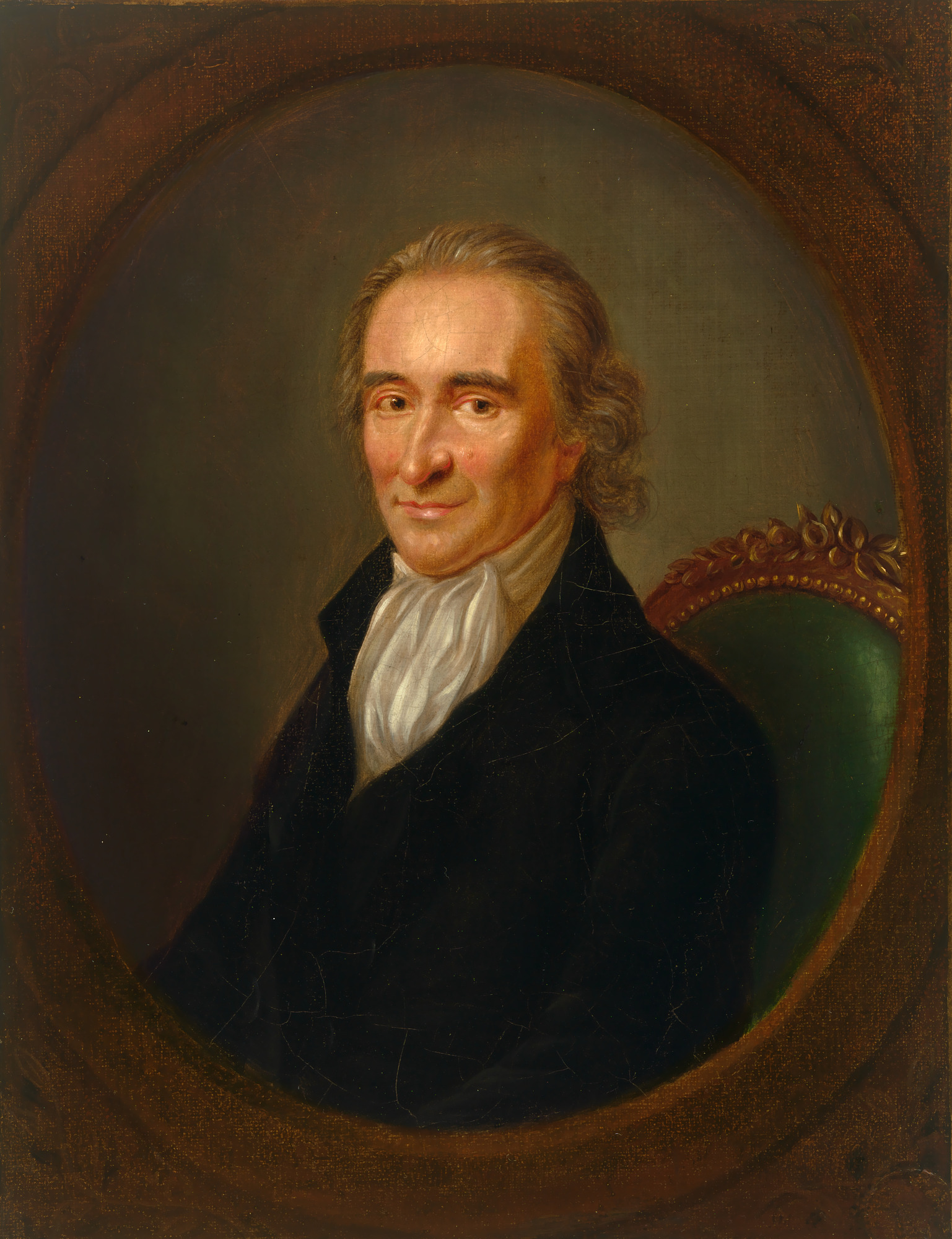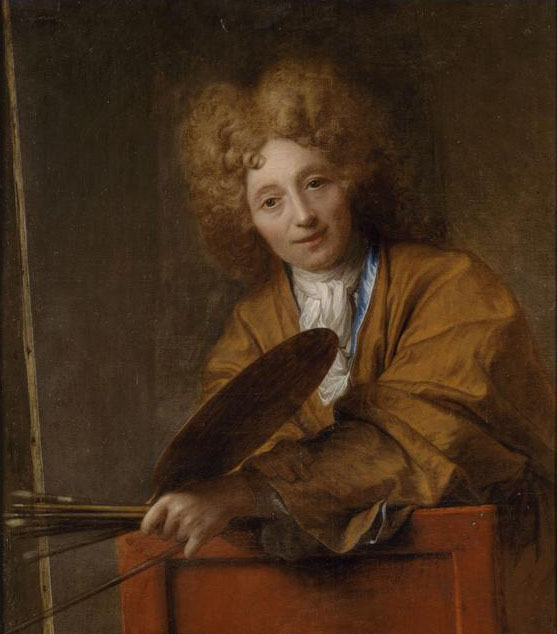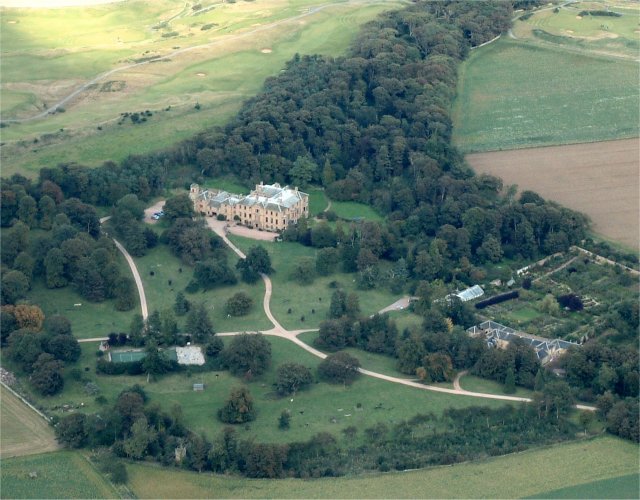|
Sir Robert Anstruther, 1st Baronet
Sir Robert Anstruther, 1st Baronet (1658 – March 1737), of Wrae, Linlithgow, and Balcaskie, Fife, was a Scottish politician who sat in the Parliament of Scotland between 1681 and 1707 and in the British House of Commons from 1709 to 1710. Early life Anstruther was baptized on 24 September 1658, the third son of Sir Philip Anstruther of Anstruther, Fife, a member of the Scottish Parliament, and his wife Christian Lumsden, daughter of Sir James Lumsden of Innergellie, Fife. Career Anstruther had an early spell in the Parliament of Scotland as a Burgh Commissioner for Anstruther Easter (Parliament of Scotland constituency), Anstruther Easter from 1681 to 1682. He married Sophia Kinnear, the daughter and coheiress of David Kinnear, and adopted the additional name of Kinnear on the death of his father-in law in 1684. Sophia died in 1686 and he married as his second wife Jean Monteith, the daughter and heiress of William Monteith of Wrae, on 12 March 1687. From 1689 to 1690, unlike h ... [...More Info...] [...Related Items...] OR: [Wikipedia] [Google] [Baidu] |
Balcaskie
Balcaskie is a 17th-century country house in Fife, Scotland. It lies around 2 km north of St Monans, and is notable chiefly as the home and early work of architect Sir William Bruce. Robert Lorimer, an admirer of Bruce, called the house "the ideal of what a Scottish gentleman's home ought to be". Balcaskie remains the seat of the Chief of the Name and Arms of Anstruther, Tobias Alexander Anstruther of that Ilk. History The original Balcaskie House was built shortly before 1629, as the home of the Moncrieffs of Balcaskie, and was a traditional L-plan fortified house of three storeys and attic. In 1665 the estate was bought by William Bruce, who began enlarging the house for his own use, between 1668 and 1674. In 1668 he acquired a baronetcy in Nova Scotia and became Sir William Bruce. Bruce planned the new house himself and employed John Hamilton as mason, and Andrew Waddell as wright (carpenter). The house was expanded from the L-plan to an almost symmetrical U-plan, wi ... [...More Info...] [...Related Items...] OR: [Wikipedia] [Google] [Baidu] |
1710 British General Election
The 1710 British general election produced a landslide victory for the Tories. The election came in the wake of the prosecution of Henry Sacheverell, which had led to the collapse of the previous government led by Godolphin and the Whig Junto. In November 1709 the clergyman Henry Sacheverell had delivered a sermon fiercely criticising the government's policy of toleration for Protestant dissenters and attacking the personal conduct of the ministers. The government had Sacheverell impeached, and he was narrowly found guilty but received only a light sentence, making the government appear weak and vindictive. The trial enraged a large section of the population, and riots in London led to attacks on dissenting places of worship and cries of " Church in Danger". The government's unpopularity was further increased by its enthusiasm for the war with France, as peace talks with the French king Louis XIV had broken down over the government's insistence that the Bourbons hand over t ... [...More Info...] [...Related Items...] OR: [Wikipedia] [Google] [Baidu] |
British MPs 1708–1710
British may refer to: Peoples, culture, and language * British people, nationals or natives of the United Kingdom, British Overseas Territories and Crown Dependencies. * British national identity, the characteristics of British people and culture * British English, the English language as spoken and written in United Kingdom of Great Britain and Northern Ireland and, more broadly, throughout the British Isles * Celtic Britons, an ancient ethno-linguistic group * Brittonic languages, a branch of the Insular Celtic language family (formerly called British) ** Common Brittonic, an ancient language Other uses *People or things associated with: ** Great Britain, an island ** British Isles, an island group ** United Kingdom, a sovereign state ** British Empire, a historical global colonial empire ** Kingdom of Great Britain (1707–1800) ** United Kingdom of Great Britain and Ireland (1801–1922) * British Raj, colonial India under the British Empire * British Hong Kong, colonial H ... [...More Info...] [...Related Items...] OR: [Wikipedia] [Google] [Baidu] |
Members Of The Parliament Of Scotland 1702–1707
Member may refer to: * Military jury, referred to as "Members" in military jargon * Element (mathematics), an object that belongs to a mathematical set * In object-oriented programming, a member of a class ** Field (computer science), entries in a database ** Member variable, a variable that is associated with a specific object * Limb (anatomy), an appendage of the human or animal body ** Euphemism for penis * Structural component of a truss, connected by nodes * User (computing), a person making use of a computing service, especially on the Internet * Member (geology), a component of a geological formation * Member of parliament * The Members, a British punk rock band * Meronymy, a semantic relationship in linguistics * Church membership, belonging to a local Christian congregation, a Christian denomination and the universal Church * Member, a participant in a club or learned society A learned society ( ; also scholarly, intellectual, or academic society) is an organizatio ... [...More Info...] [...Related Items...] OR: [Wikipedia] [Google] [Baidu] |
Nobility From Fife
Nobility is a social class found in many societies that have an aristocracy. It is normally appointed by and ranked immediately below royalty. Nobility has often been an estate of the realm with many exclusive functions and characteristics. The characteristics associated with nobility may constitute substantial advantages over or relative to non-nobles or simply formal functions (e.g., precedence), and vary by country and by era. Membership in the nobility, including rights and responsibilities, is typically hereditary and patrilineal. Membership in the nobility has historically been granted by a monarch or government, and acquisition of sufficient power, wealth, ownerships, or royal favour has occasionally enabled commoners to ascend into the nobility. There are often a variety of ranks within the noble class. Legal recognition of nobility has been much more common in monarchies, but nobility also existed in such regimes as the Dutch Republic (1581–1795), the Republic o ... [...More Info...] [...Related Items...] OR: [Wikipedia] [Google] [Baidu] |
1737 Deaths
Events January–March * January 5 – Spain and the Holy Roman Empire sign instruments of cession at Pontremoli in the Grand Duchy of Tuscany in Italy, with the Empire receiving control of Tuscany and the Grand Duchy of Parma and Piacenza, in return for Don Carlos of Spain being recognized as King of Naples and King of Sicily. * January 9 – The Empires of Austria and Russia enter into a secret military alliance that leads to Austria's disastrous entry into the Russo-Turkish War. * January 18 – In Manila, a peace treaty is signed between Spain's Governor-General of the Philippines, Fernándo Valdés y Tamon, and the Sultan Azim ud-Din I of Sulu, recognizing Azim's authority over the islands of the Sulu Archipelago. * February 20 – France's Foreign Minister, Germain Louis Chauvelin, is dismissed by King Louis XV's Chief Minister, Cardinal André-Hercule de Fleury * February 27 – French scientists Henri-Louis Duhamel du Monceau and Geor ... [...More Info...] [...Related Items...] OR: [Wikipedia] [Google] [Baidu] |
1658 Births
Events January–March * January 13 – Edward Sexby, who had plotted against Oliver Cromwell, dies in the Tower of London. * January 30 – The " March Across the Belts" (''Tåget över Bält''), Sweden's use of winter weather to send troops across the waters of the Danish straits at a time when winter has turned them to ice, begins. Within 17 days, Sweden's King Karl X Gustav leads troops across the ice belts to capture six of Denmark's islands as Swedish territory. * February 5 – Prince Muhi al-Din Muhammad, one of the sons of India's Mughal, Emperor Shah Jahan, proclaims himself Emperor after Jahan names Muhi's older brother, Dara Shikoh, as regent, and departs from Aurangabad with troops. * February 6 – Swedish troops of Charles X Gustav of Sweden cross The Great Belt in Denmark, over frozen sea. * March 8 (February 26 OS) – The peace between Sweden and Denmark-Norway is concluded in Roskilde by the Treaty of Roskilde, under which ... [...More Info...] [...Related Items...] OR: [Wikipedia] [Google] [Baidu] |
Alexander Areskine
Sir Alexander Erskine of Cambo, 2nd Baronet (16631729) of Cambo, Fife was a Scottish baronet and Lord Lyon, King of Arms. Life Erskine was the son of Sir Charles Erskine of Cambo, 1st Bt. and Penelope Barclay. He was born in the same year that his father had been created Lord Lyon, the principal Officer of Arms in the Kingdom of Scotland. By an act of the Parliament of Scotland on 12 June 1672 he was created joint Lyon with his father and in this capacity helped his father establish the Lyon Register.Balfour Paul, vol v, p 90 He inherited the baronetcy and the Cambo Estate in Fife on his father's death in 1677. He was crowned officially as sole Lord Lyon at Holyrood Palace on 27 July 1681 by the then Lord High Commissioner to the Parliament of Scotland, the Duke of Albany and York. In 1711 Erskine was joint Keeper of the Signet with his cousin, John Erskine, Earl of Mar, and from 1710 until 1713 was Member of Parliament for Fifeshire During the 1715 Jacobite uprising, Ersk ... [...More Info...] [...Related Items...] OR: [Wikipedia] [Google] [Baidu] |
Patrick Moncreiff
Patrick Moncreiff (c.1674–1709), of Reidie and Myres Castle, Fife, was a Scottish politician who sat in the Parliament of Scotland from 1706 to 1707 and in the British House of Commons from 1707 to 1709. Moncreiff was the second, but eldest surviving son of George Moncreiff, of Reidie and Myres Castle and his wife Margaret Leslie, daughter of John Leslie of Myres Castle. In 1694, he became a lieutenant in Lord John Murray’s newly formed regiment of Foot and was then captain from 1695 until the regiment was disbanded in 1697. He studied at Leyden in 1698, aged 24. He returned to Scotland, and was admitted as an advocate in 1701. He became a Burgess of Edinburgh in 1702 and on 1 March 1702, married Anna or Agnes Skene, widow of James Skene of Grange and Kirkcaldy, Fife, and daughter of John Drummond of Cultmalundie, Perth. She died before 7 April 1720. Moncreiff was returned to the Scottish parliament as Burgh Commissioner for Kinghorn on 18 June 1706. He supported ... [...More Info...] [...Related Items...] OR: [Wikipedia] [Google] [Baidu] |
Sir Philip Anstruther, 2nd Baronet
Sir Philip Anstruther, 2nd Baronet of Balcaskie, Fife (1688 – 27 May 1763) was a Scottish advocate and landowner. He was the eldest son of Sir Robert Anstruther, 1st Baronet, a member of the parliaments of both Scotland and Great Britain. He succeeded his father to the baronetcy and Balcaskie in 1737. He studied law, was admitted to the Faculty of Advocates in 1711 and was appointed a principal Clerk to the Bills. He married Catherine, the daughter of Lord Alexander Hay of Spott, Haddingtonshire, with whom he had 7 sons. She died at Balcaskie, 11 February 1759. He died 27 May 1763 and is memorialized in Abercrombie Old Chapelyard, Fife, Scotland with many other family members He was succeeded by his eldest son Sir Robert Anstruther, 3rd Baronet. References Sources * 1688 births 1765 deaths Nobility from Fife Philip, 2nd Baronet 102 102 may refer to: *102 (number), the number * AD 102, a year in the 2nd century AD * 102 BC, a year in the 2nd century BC ... [...More Info...] [...Related Items...] OR: [Wikipedia] [Google] [Baidu] |
Battle Of Preston (1715)
The Battle of Preston (9–14 November 1715) was the final action of the Jacobite rising of 1715, an attempt to put James Francis Edward Stuart on the British throne in place of George I. After two days of street-fighting, the Jacobite commander Thomas Forster surrendered to government troops under General Charles Wills. It was arguably the last battle fought on English soil. Background The Jacobites moved south into England with little opposition, and by the time they reached Preston, Lancashire had grown to about 4,000 in number. Their cavalry entered Preston on the night of 9 November 1715, and as they approached two troops of dragoons and part of a militia regiment retreated to Wigan. General Charles Wills was ordered to halt their advance, and left Manchester on 11 November with six regiments, arriving on 12 November. The Jacobite leader was Thomas Forster, a Northumberland squire with minimal military experience, selected largely because he was a Protestant; learn ... [...More Info...] [...Related Items...] OR: [Wikipedia] [Google] [Baidu] |




